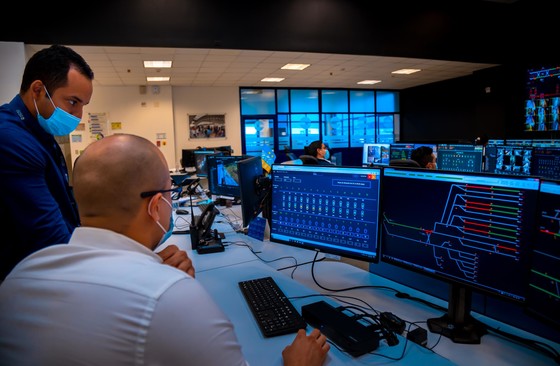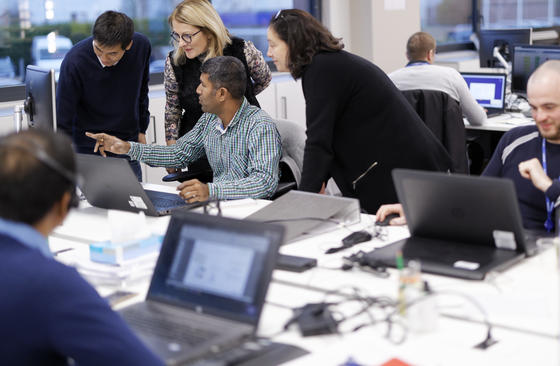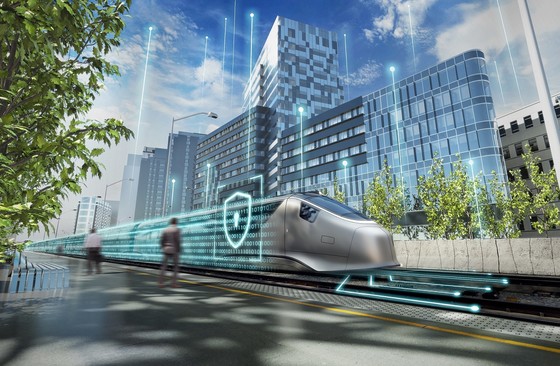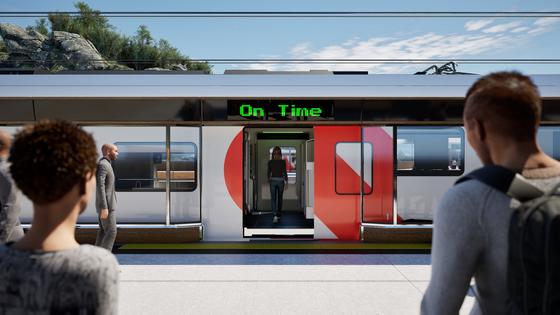
From passion to innovation: the role of Artificial Intelligence in the evolution of digital mobility
From passion to innovation: the role of Artificial Intelligence in the evolution of digital mobility
State-of-the-art AI systems are fast replacing traditional control center solutions for more punctual, safe, efficient and sustainable rail services.
Just a few years ago, AI algorithms had yet to prove their worth at Alstom’s Urban Integrated Control Center, the department in charge of providing traffic supervision and regulation, decision support and smart incident management solutions to railway operators. Now, thanks to the work of Kenza Saiah, Advanced Operations Program Development Manager, and her team, they’re in hot demand as operators recognise the benefits for more punctual, safe, efficient and sustainable rail services. Today, Alstom is a recognised leader in this field, developing state-of-the-art solutions in line with customers’ and passengers’ needs.

Kenza Saiah is a senior AI expert and the head of the AI R&D program in Alstom’s Urban Integrated Control Center department. In this role, she also oversees doctoral theses in AI applied to the rail industry and actively contributes to Alstom’s efforts to encourage students – particularly women – to choose rewarding technical careers.
Prior to joining Alstom, Kenza had already held numerous positions in AI R&D, particularly in the automotive sector, working with industry leaders such as PSA (now Stellantis), Valeo and Thales, as well as public research institutes. She holds a PhD in AI from Pierre and Marie Curie University, as well as two master’s degrees in AI/Decisions and Data Mining/Business Intelligence, and a first degree in Engineering.
Connect with Kenza Saiah on LinkedIn
After deciding to study engineering, which she believed would make good use of her analytical and mathematical skills, Kenza specialized in data mining, business intelligence and AI. Today, 15 years later, she is still excited to be working in a field that can change lives. She’s happy to report that she’s always been supported in this traditionally male-dominated field – and not just by other women.
Kenza leads the AI R&D program at Alstom’s Urban Integrated Control Center. This department offers automatic train supervision (ATS) solutions, or advanced traffic regulation and operations management functionalities for a complete vision of networks. It also offers a station and fixed equipment management system (SCADA), as well as a communication and security system (ISM) to optimize train movements and maintenance.
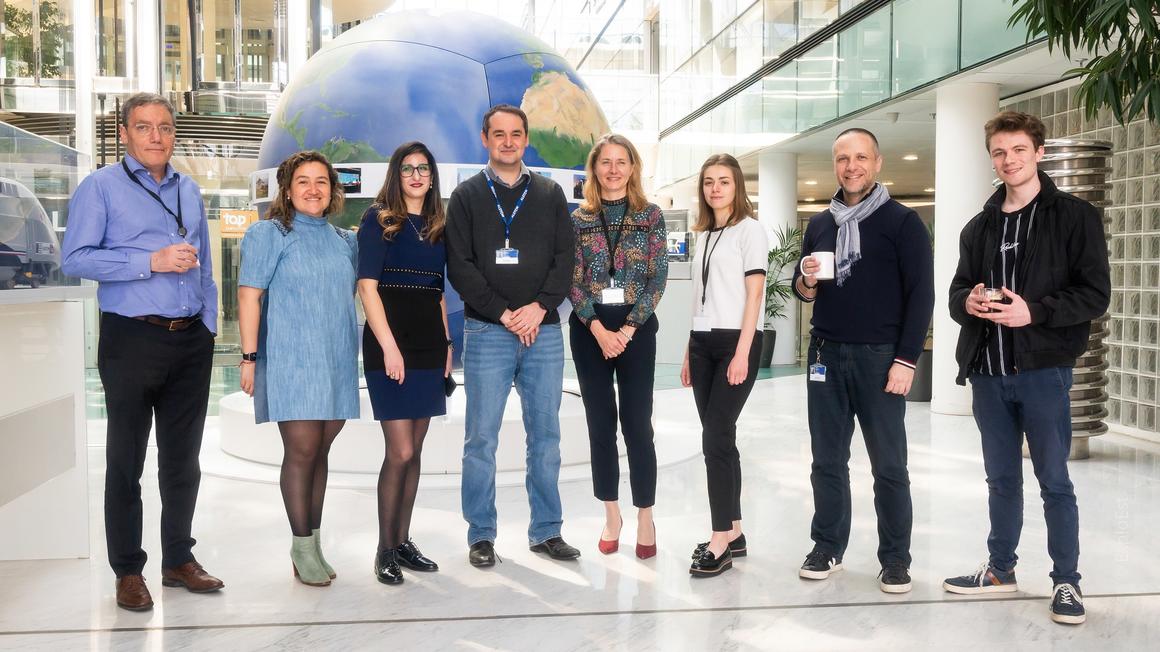
AI for sustainable, on-time rail travel and passenger satisfaction
With her team, she’s in charge of delivering innovative solutions based on AI algorithms to boost service quality and sustainability. This can mean using machine-learning algorithms to predict network ridership and adapt supply to passenger demand for the best possible service quality. It can mean orchestrating train arrivals and departures to recover energy from regenerative breaking – in other words, using the energy produced by a train arriving at a station to start another train leaving the station. And AI can also enable predictive maintenance, which helps increase the life of rolling stock by identifying anomalies and raising alerts before scheduled maintenance. These are just some examples.
As Kenza explains, “We have to find the right trade-off between many parameters to achieve our goal, which in addition to making travel sustainable is to avoid any delays in train timetables. When unexpected events occur, like passengers holding the train doors, we need to handle them effectively and reduce delays. To do that, we need to take the right decisions, like reducing dwelling time at stations. These decisions are aided by AI.”
To simplify a complex topic, AI is a data science tool that helps humans extract more information from the available data, and faster. To do this, Alstom uses machine learning algorithms and deep learning algorithms. With machine learning, humans write algorithms to enable machines to learn from a vast amount of data, whereas with deep learning (a subset of machine learning), artificial networks build on this intelligence to adapt by themselves.
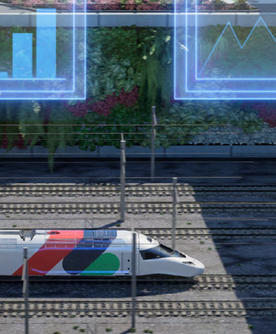
Whitepaper: Artificial Intelligence across Alstom
Read moreA bold move to push the limits
Today, customers of Alstom’s Urban Integrated Control Center are eager for the latest AI solutions, but this hasn’t always been the case. In fact, just four years ago, when Kenza joined the team, she was the only one with AI expertise and had to overcome skepticism from both her colleagues and clients. “Although my initial AI proposals were perceived as promising, they had no proven track record in this field, so I had to work on convincing first myself, then my team and the domain experts by showing that AI-based solutions could be applied to mobility and our industry. People thought they would lose control over our systems, so I had to earn their trust by demonstrating the efficiency of AI algorithms compared to more classic solutions.”
According to Kenza, Alstom has been a pioneer in this field and remains a leader in AI-driven sustainable mobility. “Ten years ago, we didn’t imagine there’d be self-driving cars, which couldn’t happen without AI. It’s been the same in rail, where there’s a lot of focus on safety, so people preferred conventional solutions based on classic algorithms. But Alstom has made a bold decision, turning to trustworthy and robust AI solutions when traditional solutions have shown their limits. I think it’s the right way to have advanced, competitive solutions. Our customers are more and more demanding and they’re always looking for the most advanced solutions. We want to give them intelligent, sustainable mobility solutions with high-quality service for passengers.” She concludes, “AI has its place in this very challenging field.”
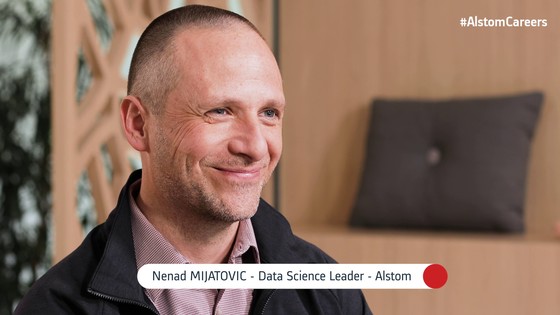
At Alstom, we have many fantastic opportunities in the AI and Data Science fields. Join us to shape the future of mobility with us!
